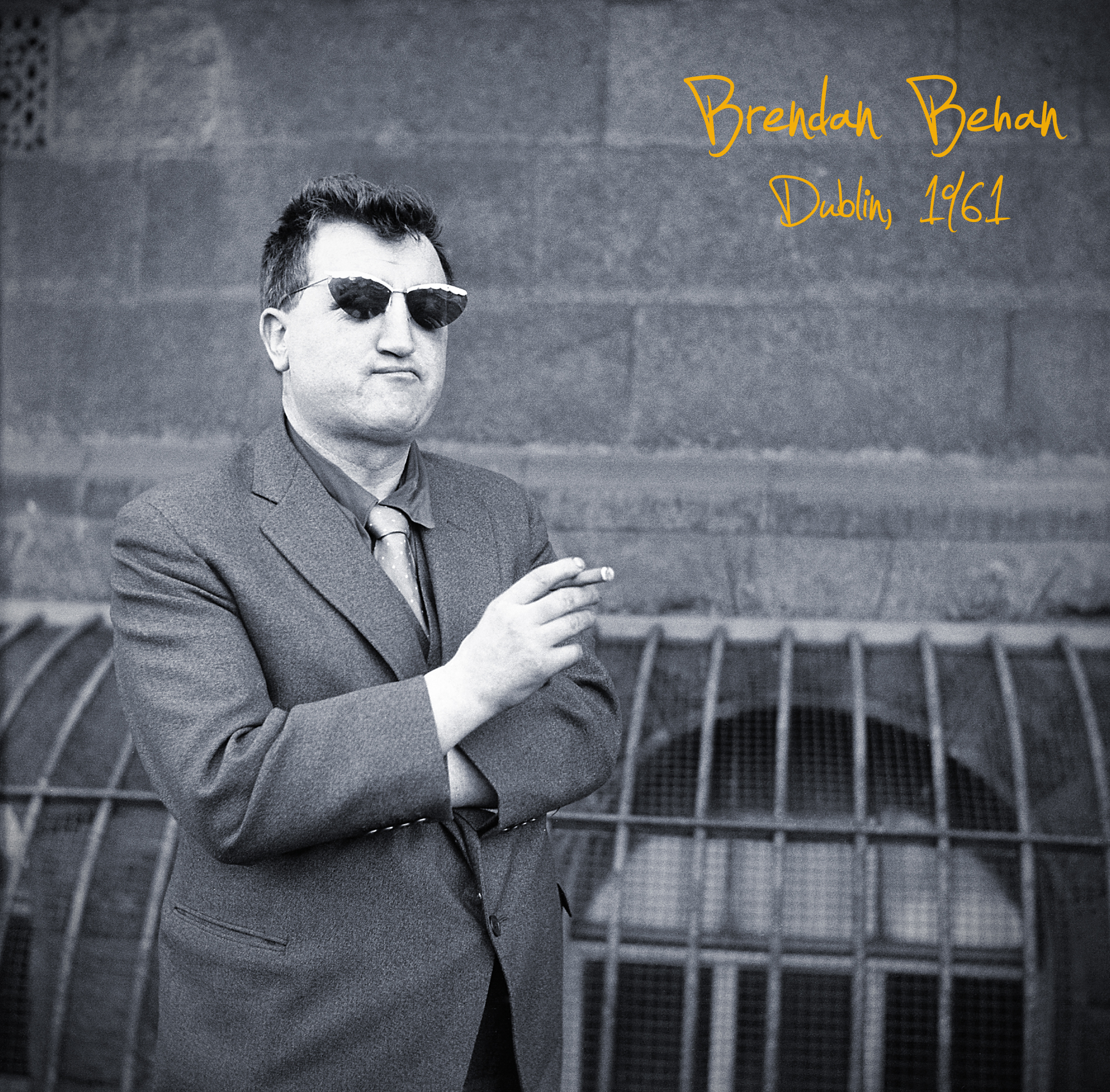The Quare Fellow represented the brilliant arrival of Brendan Behan, with New York’s Saturday Review insisting that ‘Brendan Behan promises to be the most exciting new playwright to come out of Ireland since Sean O’Casey.’ It was a comparison made by others, with Samuel Beckett hailing the young writer to be ‘the new O’Casey.’

Brendan Behan leaving the High Court.
09.02.1961
Like O’Casey, Behan’s world was the heart of Dublin’s inner-city, but there was one crucial difference. O’Casey captured the excitement of an unfolding revolution in works like The Plough and The Stars, but Behan wrote about the society that had emerged immediately after it. Born in 1923, family lore suggested he had first encountered his father through the bars of Kilmainham Gaol. Had life – or the Civil War – gone a little differently, Behan’s upbringing would likely have been in southside Inchicore. The difficulties of a revolution, and the financial pressures it brought to the household, brought the Behans to Russell Street in Dublin’s north inner-city, and a tenement owned by his grandmother.
Writing of New York, a city he fell madly in love with (and where a plaque now honours him on the Chelsea Hotel), Behan insisted that ‘we don’t come to a city to be alone, and the test of a city is the ease with which you can see and talk to other people.’ By the same logic, Dublin certainly passed his test. From a young age Behan loved the community around him on Russell Street, in the shadow of Croke Park. The humour of its people and the folklore of the locality is found throughout his output. He would later tip his hat to the area by publishing The Scarperer, a story which had first been serialised under a pseudonym in The Irish Times, as ‘Emmet Street.’ Those who knew their Dublin geography recognised it as a neighbouring street to where Behan had been raised.
Though he rarely admitted it, Behan was born on the southside, in Dublin’s Holles Street Hospital. His recounting that ‘I was born in a Georgian house that had gone to rack and ruin as a tenement, I should know’, said more of the image he had cultivated of himself. Though commemorated with a plaque on the family home on Crumlin’s Kildare Road, Russell Street remained pivotal to his identity.
A member of the republican boyscouts Na Fianna Éireann, Behan would graduate through the revolutionary ranks and later partake in the disastrous IRA bombing campaign of 1939 in Britain. The borstal system revealed much to him of shared working-class identity, and his own bisexuality. Of the boys alongside him, he recalled how ‘I had the same rearing as most of them, Dublin, Liverpool, Manchester, Glasgow, London. All our mothers had all done the pawn – pledging on Monday, releasing on Saturday.’
While those times inspired Borstal Boy, it was not published until 1958. The Quare Fellow instead plays out inside the walls of Mountjoy Prison, an institution in which Behan was imprisoned following an altercation with Gardaí at a republican commemoration in 1942. A visitor to the prison today will see a mural honouring ‘The Auld Triangle’ on entering, while Behan is also recalled within the museum. Most fittingly of all, John Coll’s statue of Behan – which invites us to sit beside the writer – sits alongside the Royal Canal. It is within sight of the walls of ‘Hotel Mountjoy’, as republicans grimly christened it in earlier times.
Today, prisoners in Mountjoy frequently read and perform Behan’s work in amateur performances. He would no doubt delight that Borstal Boy is amongst the most requested books in the prison library. While life brought Behan far beyond Russell Street and Mountjoy Prison, he never lost empathy for the incarcerated. While The Quare Fellow was a hit in Dublin for reasons of local familiarity and wit, it struck a different note elsewhere, where questions around the death penalty were coming to the fore.
Donal Fallon, November 2023



